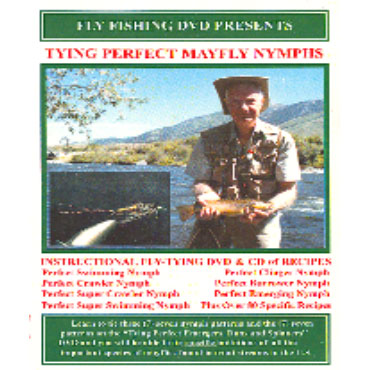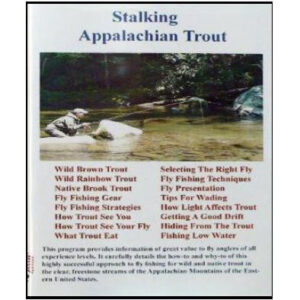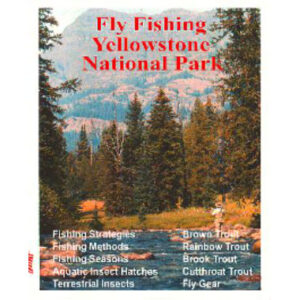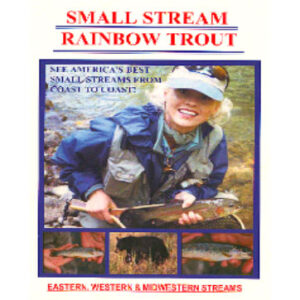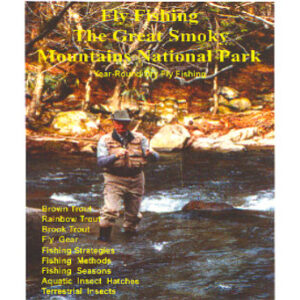Learn to tie our 7 “Perfect Mayfly” nymph patterns. By varying the size and color of materials you will be able to tie over 80 highly effective specific imitations of all the important mayfly nymphs that trout feed on from coast to coast.
Length: 1 hour, 20 min. plus promos 25 min.
Total of 1 hour, 45 min.
Patterns:
The mayfly patterns including in these programs are selected to imitate the 43 (forty-three) categories of mayflies that are included in our Perfect Fly selection. We attempted to keep the number of different patterns and recipes as low as possible. The result was forty-three categories. These categories closely represent over one-hundred species taken from the genera of all the important families of mayflies. In each of the 43 categories, there are usually 5 (five) and may be as many as 6 (six) different patterns specifically selected to cover the various stages of the mayfly species covered in that category. We believe that there’s enough difference in the naturals in each of the categories to justify tying and fishing specific imitations that represent them. Keep in mind, this covers the entire United States and Canada and you may only be concerned with the mayflies that are prevalent in the area you fish.
Tying Perfect Fly Mayfly Nymphs
Learn to tie our 7 “Perfect Mayfly” nymph patterns. By varying the size and color of materials you will be able to tie over 80 highly effective specific imitations of all the important mayfly nymphs that trout feed on from coast to coast.
These are the seven (7) basic patterns:
1. Perfect Swimmer Nymph
2. Perfect Super Swimmer Nymph
3. Perfect Crawler Nymph
4. Perfect Super Crawler Nymph
5. Perfect Burrower Nymph
6. Perfect Clinger Nymph
7. Perfect Emerging Nymph
There are basically four types of mayfly nymphs-swimmers, burrowers, crawlers and clingers. Most clinger mayfly nymphs look about as much alike a burrower mayfly nymph as an elk looks like an antelope. The slim, streamlined swimming nymphs don’t resemble the crawlers very much either. Generally speaking, this fact alone requires at least four basic types of mayfly nymph patterns. Some of the nymphs within the same category are quite different. While it is true that many mayfly nymph species can be imitated well by just varying the size and color of the same pattern, others require features with different shapes and forms.
Our nymph and emerging “Perfect Mayfly” imitations vary from our “Nb” nymph that is intended to be fished from on or near the bottom to the surface; to the “En” or emerging nymph, which has unfolding wings and the front part of its body partially out of the shuck.
We do not think that trout can count but we do think that the size, shape and form of a fly is a factor in whether or not trout take your imitation for the real thing. Mayfly nymphs have six legs, not twenty or thirty like many standard imitations. The legs extend out along the sides of the nymph. They do not have several legs on each side extending out of the same spot. Mayfly nymphs have three, or sometimes two, tails; not six or a dozen like many imitations. Although gills are present in certain areas, the abdominal section of most mayfly nymphs is basically smooth and segmented, not solid or fury.
This tying mayfly nymphs DVD shows you how to tie each of the following (7) seven mayfly nymph patterns. These patterns will imitate all the major species of mayfly nymphs that trout feed on. Once you learn to tie these seven basic patterns, you will never need to tie another mayfly nymph pattern. The flies shown below do not imitate any particular species of mayflies. The colors of materials should match the particular species of mayfly you desire to imitate.
1. Perfect Swimmer Nymph:
Imitates small swimming nymphs like the Little Blue-winged Olive group of Plauditus, Timpanogo, Acentrella, and Diphetor genera. Blue-winged Olives like the baetis species are will imitated with this slim, profile nymph. This one can be tied in hook sizes ranging from a 14 to a 22. Most of them are a size 16 and smaller. This one can be weighted to fish on or near the bottom or as is in the surface skim.
2. Perfect Super Swimmer Nymph:
Imitates larger swimming nymphs such as the Slate Drakes, Gray Drakes, Callibaetis, Brown Duns and others. This one works best for those swimming nymphs that are a hook size 14 and larger. These larger swimming nymphs are very good swimmers and behave a lot like small minnows. They can dart around near the bottom with sudden bursts of speed. The fly can be fished dead drift but is best when presented with some action imparted either by twitching the tip of the fly rod or by small short twitches made by line hand.
3. Perfect Crawler Nymph:
Imitates a huge group of crawler mayflies including the Sulphurs, Hendricksons, Pale Evening Duns, Pale Morning Duns, Flavs, smaller Western Green Drakes (12, 14), Little Dark Hendrickson, Small Western Dark Hendricksons, Chocolate Duns, Blue Quills, Mahogany Duns, Eastern Blue-winged Olives and Tricos. It can be tied in sizes as large as a 12 hook size and down as small as a 22. In the water, it moves to imitates the gills and legs of the crawler nymphs very realistically.
4. Perfect Super Crawler Nymph:
Imitates the big crawler nymphs that are a size 10 and larger like the Great Red Quill and those Western Green Drakes that are a hook size 10 and larger. Although it doesn’t imitate a large number of species, it is important for those it does imitate. Slightly weighted, it can be fished from the bottom to just beneath the surface skim where these crawlers shed their nymphal shucks and emerge.
5. Perfect Burrower Nymph:
Imitates the big burrower nymphs which are the large drakes including the Brown, Yellow, Golden, Eastern Green, Great Olive-Green Drake, Dark Green Drake, Big Slate Drake, and White Fly. The natural movement of the materials this fly is made of imitates the swimming motions of the burrower nymphs very well. Weighted correctly for the particular depth of water you are fishing, this fly can be presented from the bottom to the surface in a very realistic manner. It is not necessary to add any additional action to the drift of the fly.
6. Perfect Clinger Nymph
Clinger nymphs are flatter than other types and have longer tails that are spread out. This fly imitates the large groups of clinger nymphs such as the Western March Browns, Eastern March Browns, Light Cahills, Cream Cahills, Heptagenia Group, Quill Gordons, Slate Duns, Yellow Quills, Dark Red Quills, Ginger Quills, & Little Yellow Quills. The thorax is weighted to help keep it on the bottom where the clingers live. The fly is much flatter than it appears in this image.
7. Perfect Emerging Nymph:
Imitates those smaller nymphs that are hanging in the surface film after the wing case has split and the wings are unfolding. For the most part, these are hook size 18 and smaller mayflies that have trouble getting through the surface skim. This fly is more nymph than dun and represents the emerger when the wings are just beginning to unfold. It will float in the skim in a more upright position than shown in this image.
Our imitations must mimic the “behavior” of mayflies as well as their looks. Good imitations must look and act natural, not so much from our overhead viewpoint, but much more so, from the trout’s underwater viewpoint. Not from the standpoint of our relatively good vision, but from the standpoint of the trout’s relatively poor vision. Mayfly nymphs have six legs, not twenty or thirty like many standard imitations. The legs extend out along the sides of the nymph. Mayflies do not have several legs on each side extending out of the same spot. They have three, or sometimes two, tails; not six or a dozen like many imitations. We know mayflies can’t count, but several tails provides a shape, size and form unlike that of real mayfly tails. Although gills are present in certain areas, the abdominal section of most mayfly nymphs is basically smooth and segmented, not solid or fury. At some point of departure from a fly that looks like the real one to a fly that remotely resembles a the real fly; depending on many factors such as the length of time the fish has to examine the fly, the clarity of the water and many others; trout can tell the difference. If this were not true, you may as well use dough balls for flies.
Our nymph and emerging “Perfect Mayfly” imitations vary from our “Nb” nymph that is intended to be fished on or near the bottom; to the “En” or emerging nymph, which has unfolding wings and the front part of its body partially out of the shuck; to an “Et” or emerging combination nymph and dun, with the shuck still hanging or trailing on the “almost” emerged dun shown in our mayfly dun, emerger and spinner DVD. Imitations can only represent the emerging insect at a specific stage of life at a specific time during this short interval of time. Trout take advantage of the emerging mayflies during this transition time, eating them with ease. Some mayflies emerge on the bottom or somewhere in between the bottom and the surface, and swim to the surface as duns. Our “Ea”, emerging adult or wet fly imitation, represents those mayflies that emerge below the surface.As mentioned before, we do not think trout count the number of tails and legs on a fly, but we do think the more closely the imitation matches the natural nymph, emerger, dun or spinner, the more effective the fly will be.
Off hand, you may think that this is a tremendous number of flies. Actually it is not. Most of the “Perfect Flies” are just variations of the same thing, differences in color and size of the main features such as length of tails, size of the thorax, etc. There are only (seven) 7 basic patterns. Once you learn to tie these basic mayfly nymphs, you can tie specific imitations of all of them.
The mayfly patterns including in this program are selected to imitate the 43 (forty-three) categories of mayflies that are included in our “Imitating Aquatic Insects – Mayflies” program. We attempted to keep the number of different patterns and recipes as low as possible. The result was forty-three categories. These categories closely represent over one-hundred species taken from the genera of all the important families of mayflies. In each of the 43 categories, there are usually 4 (four) and may be as many as 6 (six) different patterns specifically selected to cover the various stages of the mayfly specie or species covered in that category. We believe that there is enough difference in the naturals in each of the categories to justify tying and fishing specific imitations that represent them. Keep in mind, this covers the entire United States and you may only be concerned with the mayflies that are prevalent in the area you fish. You can further eliminate the ones needed even more by obtaining the “Choosing the Right Fly” for the area you fish. This way, you may only want to be concerned with tying the flies you need for the streams you fish within that area.
If you carry flies representing all the patterns for all stages of all the mayflies in this program, you will be able to imitate just about any species of mayfly encountered in the United States, and most anywhere else for that matter. There are some species that are rarely encountered on trout streams or still water, species that are marginal warm water mayflies and species that appear extremely sparse in density that we do not have specific imitative patterns for. If you encounter such a bug, then we feel certain that one of the patterns you have will come close enough that you or the trout will never know the difference.

